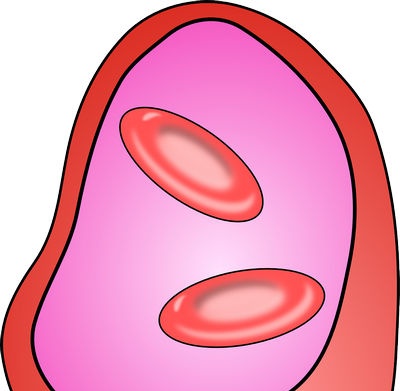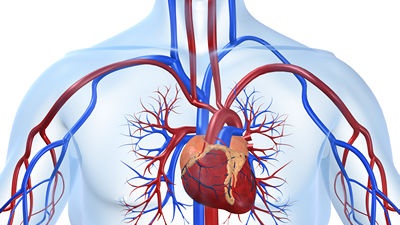|
 Atherosclerosis is considered a disease of the elderly. Indeed, the formidable complications of this disease - ischemic heart disease, myocardial infarction, cerebral hemorrhage - most often occur in elderly people. Atherosclerosis is considered a disease of the elderly. Indeed, the formidable complications of this disease - ischemic heart disease, myocardial infarction, cerebral hemorrhage - most often occur in elderly people.
But these are already the final acts of the tragedy, which for years and even decades was played out invisibly and often imperceptibly. And it happens like this: first, special seals appear on the inner surface of the arteries - plaques, over the years their number and size increase, the walls of the vessels become denser, their lumen narrows, the blood supply to vital organs is disrupted.
But before plaques appear, metabolism is disturbed, in particular fat metabolism, hormonal changes also occur, changes in the blood coagulation system, and cholesterol in the blood rises. And these deviations are often found already in childhood. There are even more distressing discoveries indicating that seemingly healthy children, adolescents and young men experience sclerotic changes in the abdominal aorta and in the coronary arteries.
Among the reasons contributing to the early development of atherosclerosis, experts call obesity, low physical activity, a hereditary predisposition to disorders of fat metabolism and increased blood pressure, as well as neuro-emotional overload.
Our study of the health status, living conditions and organization of nutrition of a large group of schoolchildren showed that the listed risk factors are very common.
First of all, it is alarming that among children and adolescents there are many overweight and obese. They are even among first graders, which means that the prerequisites for obesity are laid even in preschool age.
Overweight is the first step to atherosclerosis. No wonder they say that getting fat means getting old. Obesity is often associated with high blood pressure and heart problems. Elevated blood pressure figures were observed in 15 percent of obese boys and girls surveyed, and in 9 percent of children who were of appropriate age and height.
An electrocardiographic study of heart function revealed abnormalities in 52 percent of obese children and 24 with normal body weight, and these deviations were much more pronounced in obese children.
Obesity is the leading risk factor for early atherosclerosis. And the reason for it, as our studies also convince, is simple - overeating!
 We found that the diet of most of the schoolchildren we examined is overloaded with animal fats and easily digestible carbohydrates. Children receive excess amounts of butter, bread, all kinds of buns, sugar, sweets, pasta. At the same time, vegetable oil is often completely absent from their daily menu, little milk, dairy products. Very few fruits and vegetables! We found that the diet of most of the schoolchildren we examined is overloaded with animal fats and easily digestible carbohydrates. Children receive excess amounts of butter, bread, all kinds of buns, sugar, sweets, pasta. At the same time, vegetable oil is often completely absent from their daily menu, little milk, dairy products. Very few fruits and vegetables!
It is completely unacceptable that children in the morning, before leaving for school, eat little, hastily or leave without breakfast at all: it is also unacceptable to eat densely in the afternoon and at night, to eat dry food, on the go, reading a book, sitting in front of the TV.
With this, so to speak, diet, the total calorie content of food significantly exceeds the natural physiological needs, which contributes to the disruption of fat metabolism, and therefore the development of atherosclerosis. This threat becomes even more real when children move little, that is, spend little energy.
It is necessary to properly organize the nutrition of the child from the first days of his life: if you have not done this, start correcting your mistakes immediately, today!
When sending a child to a nursery or kindergarten, do not feed him breakfast at home, but the student needs to eat quite densely before starting classes. Give him a meat, fish, cottage cheese or dairy dish, an egg. These foods contain protein that the growing body needs. A good breakfast improves performance. including mental.
Schoolchildren often do not eat in the morning because they do not have time. Teach your child to get up early, be sure to do exercises, wash and dress quickly, and slowly eat breakfast.
The second breakfast (after the third lesson, and at home on weekends at about 11 o'clock) should consist of a glass of milk, kefir - always with a sandwich or bun. You should have lunch at 3 - 4 hours, not in the evening. If at this time the child is at school, let him eat in the school canteen: lunch should be hot: any soup, meat or a fish dish with garnish and compote, fruit, juice.
It is necessary to build the daily routine in the family so that the child has dinner at 2 - 2 hours before bedtime: prepare a dairy or vegetable dish for him. No meat. neither salty, nor stimulating drinks (coffee, cocoa) It is not necessary to give to children in the evening. And less liquid!
Try to make it a rule for your family to take your baby outdoors before bed. It is very useful for everyone!
By correcting the child's nutrition, you will simultaneously make the nutrition of the whole family more rational. Remember that you adults are an example for a child. He will not add salt to food at the table, if adults do not do this, and an excess of salt is very undesirable. Experts have proven that salt overload plays a significant role in the development of hypertension
If it is not customary in the family to "intercept" a sandwich, cookie, bun between meals, then the child will not do the same
It is very important to teach children to eat in moderation - not to eat more than necessary. For orientation, let's say that during the day, children 7-10 years old should not eat more than 2300 grams of food, including liquid dishes, children 11-13 years old - more than 2500, and 14-17 years old - more than 3000.
This amount should include about 500 grams of milk, kefir, curdled milk... It is desirable and 40 - 50 grams of cottage cheese
Children 7 - 13 years old need no more than 25 grams of butter per day, and 14 - 17 - no more than 30. Partially it can be replaced with lard and other animal fats. In addition, children should be given vegetable oil. The youngest - 10, the older - 15 grams per day. It is best used raw - for dressing salads, vinaigrettes.
Try to give vegetables to children for breakfast, lunch, and dinner: 7-10 years old up to 275 grams a day, older - 300 and 350 grams. You need a little less potatoes - from 200 (younger) to 300 (older) grams: porridge, pasta can be a child's menu no more than once a day.
Meat (including sausages), or fish, poultry, children 7 - 10 years old need a total of no more than 180 grams a day, 11 - 13 years old - no more than 235 grams, 14 - 17 years old - no more than 280
 At the table, we usually remind the children: eat with bread! This, of course, is correct, but even here a measure is needed, otherwise it happens that the child quickly gorges on bread, and more wholesome food remains on the plate. The maximum bread norm for the younger ones is 75 grams of rye and 165 wheat, for the older ones - 150 grams of rye and 250 wheat (of course, buns are included in wheat). At the table, we usually remind the children: eat with bread! This, of course, is correct, but even here a measure is needed, otherwise it happens that the child quickly gorges on bread, and more wholesome food remains on the plate. The maximum bread norm for the younger ones is 75 grams of rye and 165 wheat, for the older ones - 150 grams of rye and 250 wheat (of course, buns are included in wheat).
As for sweets, they should be given only for dessert and taking into account the daily sugar requirement.
Of course, we have given the norms designed for healthy children. Depending on the general condition, individual characteristics, age, the daily diet can be varied, but the main principle - not to exceed the child's needs, not to overfeed him, to prevent the predominance of fatty, sweet, flour dishes in the diet - remains in force.
Our experience shows that by correcting nutrition and correctly dosing physical activity, you can not only prevent obesity in children, but also fight it
In one school, under the supervision of the Research Institute of Food Hygiene, all children whose body weight exceeded the norm by more than 15 percent was taken. Physical therapy and swimming classes were organized for them, and the number of vegetables in the menu of school breakfasts and lunches increased due to the reduction of flour dishes and cereals. As a result, by the end of the school year, there were fewer obese children. All, and especially those who lost weight, normalized their blood pressure and electrocardiograms, and felt better.
These data provide strong evidence that by eliminating risk factors for atherosclerosis, early development of this disease can be avoided. Don't forget this, parents! After all, those unfavorable processes that could not be prevented in childhood and adolescence are then much more difficult to reverse.
L. A. Mostovaya
|
 Atherosclerosis is considered a disease of the elderly. Indeed, the formidable complications of this disease - ischemic heart disease, myocardial infarction, cerebral hemorrhage - most often occur in elderly people.
Atherosclerosis is considered a disease of the elderly. Indeed, the formidable complications of this disease - ischemic heart disease, myocardial infarction, cerebral hemorrhage - most often occur in elderly people. We found that the diet of most of the schoolchildren we examined is overloaded with animal fats and easily digestible carbohydrates. Children receive excess amounts of butter, bread, all kinds of buns, sugar, sweets, pasta. At the same time, vegetable oil is often completely absent from their daily menu, little milk, dairy products. Very few fruits and vegetables!
We found that the diet of most of the schoolchildren we examined is overloaded with animal fats and easily digestible carbohydrates. Children receive excess amounts of butter, bread, all kinds of buns, sugar, sweets, pasta. At the same time, vegetable oil is often completely absent from their daily menu, little milk, dairy products. Very few fruits and vegetables! At the table, we usually remind the children: eat with bread! This, of course, is correct, but even here a measure is needed, otherwise it happens that the child quickly gorges on bread, and more wholesome food remains on the plate. The maximum bread norm for the younger ones is 75 grams of rye and 165 wheat, for the older ones - 150 grams of rye and 250 wheat (of course, buns are included in wheat).
At the table, we usually remind the children: eat with bread! This, of course, is correct, but even here a measure is needed, otherwise it happens that the child quickly gorges on bread, and more wholesome food remains on the plate. The maximum bread norm for the younger ones is 75 grams of rye and 165 wheat, for the older ones - 150 grams of rye and 250 wheat (of course, buns are included in wheat).









